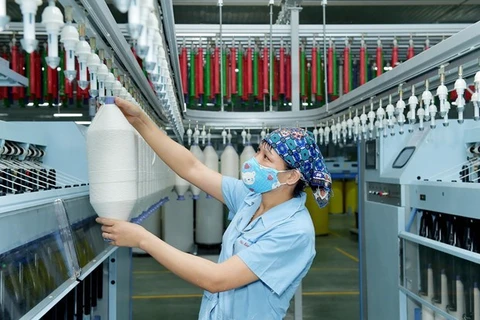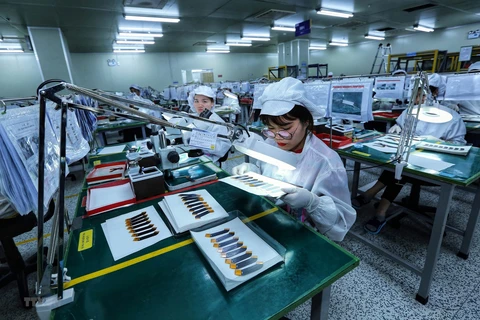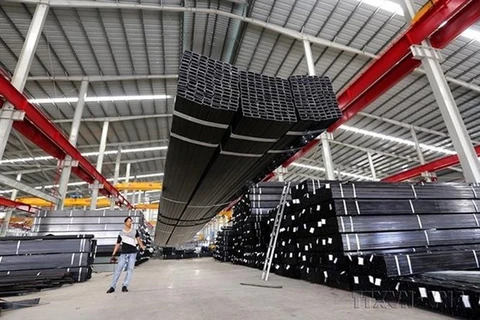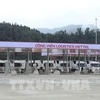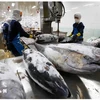Hanoi (VNA) - Experts from Hong Kong and Shanghai Banking Corporation (HSBC) forecast that Vietnam’s GDP will grow 6.5 percent in 2022, after a two-year slowdown due to the COVID-19 pandemic, and its inflation rate will be curbed at 2.7 percent.
In the “Vietnam at a Glance” report, titled “Happy Ending to a Difficult Year,” the experts expect that Vietnam will return to a solid growth track this year and that inflation will be below the central bank’s ceiling of 4 percent.
National GDP will be driven by a return of strong foreign direct investment into the market, mainly focusing on the manufacturing sector, which will benefit Vietnam’s exports, especially as the free trade agreements that have been signed over the past two years start to bear fruit.
The continued expansion of the middle class and, in particular, the rising affluent sector will lead to changes in consumption as Vietnamese people start to spend more on leisure and travel, according to the bank.
Infrastructure roll-out will also continue to fuel economic activity, especially in the renewable/green arena, given the strong initiatives set out by the Vietnamese Government following the recent 26th United Nations Climate Change Conference of the Parties (COP26) in Glasgow, the UK.
Tim Evans, CEO of HSBC Vietnam, said that to fulfil the ambitious goal, the Vietnamese government should keep a close watch on certain issues, especially soaring energy prices, to avert possible negative impacts on the national economy in the future.
At the end of 2021, Vietnam posted fourth-quarter growth of 5.2 percent year-on-year, which far exceeded market forecasts, the bank said. In particular, manufacturing quickly recovered while exports hit a record high, mainly thanks to strong increases in global demand for technology products and machinery.
In addition, the service sector started to recover, though unevenly across segments. While on-site service industries have benefited from the reopening of the economy, tourism-related industries remain rather bleak, with only about 15,000 tourist arrivals in December.
Production and exports are expected to continue to lead the way, thanks in part to stable FDI commitments. Domestic demand is likely to recover further as current restrictions are gradually lifted and the labour market recovers.
But COVID-19 remains a challenge, especially with the Omicron variant spreading globally.
Vietnam’s daily caseload has been rising from 4,000 in November to over 17,000 in the last seven days.
"The success of the country in weathering the pandemic will determine the recovery pace of local demand and international travel," HSBC said.
Meanwhile, the World Bank (WB) said in the December edition of its Vietnam Macro Monitoring that Vietnam’s economic conditions continue to improve, with both industrial production and retail sales registering a third month of growth.
Merchandise exports hit a record high of 31.9 billion USD, helping maintain a second consecutive month of trade surplus, while FDI commitment recovered after a brief dip in October, according to the report.
Inflation ticked up due to fuel price hikes, recovering non-food domestic demand and rising logistic costs while credit growth remained stable, providing ample liquidity to support the economy recovery. After two months of decreases, the Consumer Price Index (CPI) increased by 0.3 percent month-on-month in November.
Compared to a year ago, CPI rose by 2.1 percent year-on-year, slightly higher than in October, but well below the 4.0 percent target set by the State Bank of Vietnam.
The government continued its contractionary fiscal stance as the budget balance posted another month of surplus, driven by strong revenue collection, the report noted.
The policy of “living with COVID-19” will involve continued vigilance and fast action by the authorities, both in vaccination and in social distancing, testing and quarantining. There is also a clear need for fiscal policy support to boost private demand and to help the domestic economy recover.
Providing financial assistance to affected workers and households will be an essential part of achieving this objective, the report said./.


